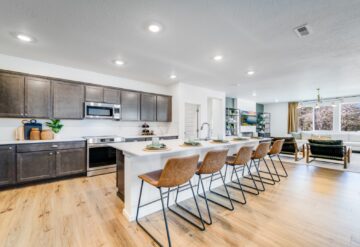Virginia Tech researchers have developed FutureHAUS, a new concept in building that combines state-of-the-art technologies with cutting-edge building techniques. The research and innovation of FutureHAUS attempts to improve flexibility and options for new home builders. As Mike Black for TecHome Builder explains, this new concept has the potential to influence the future of smart home building as new technologies become more essential in every room our homes.
Researchers at Virginia Tech have developed a concept home called FutureHAUS that utilizes the newest in home technology, including efficient systems and home automation, in a way that can teach traditional builders.
Each smart concept room is being completed in stages as part of a modular cartridge, as they call it. “What we came up with is a concept that uses what we call cartridges, which are basically entire walls of technology. So we have the whole-kitchen cartridge, bathroom wall-modules, equipment storage walls and etc.,” says Joe Wheeler, FutureHAUS project leader.
These cartridges are used to help builders understand how they can also install these pre-finished, pre-wired cartridges. They mimic modular building in that entire rooms are shipped from the factory to the job site, but the research teams believe their concept improves on modular building techniques by improving flexibility.
Increasing Flexibility and Options
“What we are doing with the FutureHAUS research is using the cartridge components as a proof-of-concept for the Internet of Things (IoT) home of the future,” says Wheeler.
For a single-family home, after the home’s slab is cast and set, the builder and integrator installs the cartridges into place, depending on the layout, and then frame the house around the cartridges. By initially installing the cartridges according to the home’s layout, builders are able to immediately see potential trouble spots that may not have been apparent during the design phase and make changes before the home is built.
The cartridges allow builders and integrators to increase job-efficiency by visualizing tech placement to understand how different systems are meant to come together and connect.
Read the full article: A Smart Home to Challenge the Industry




